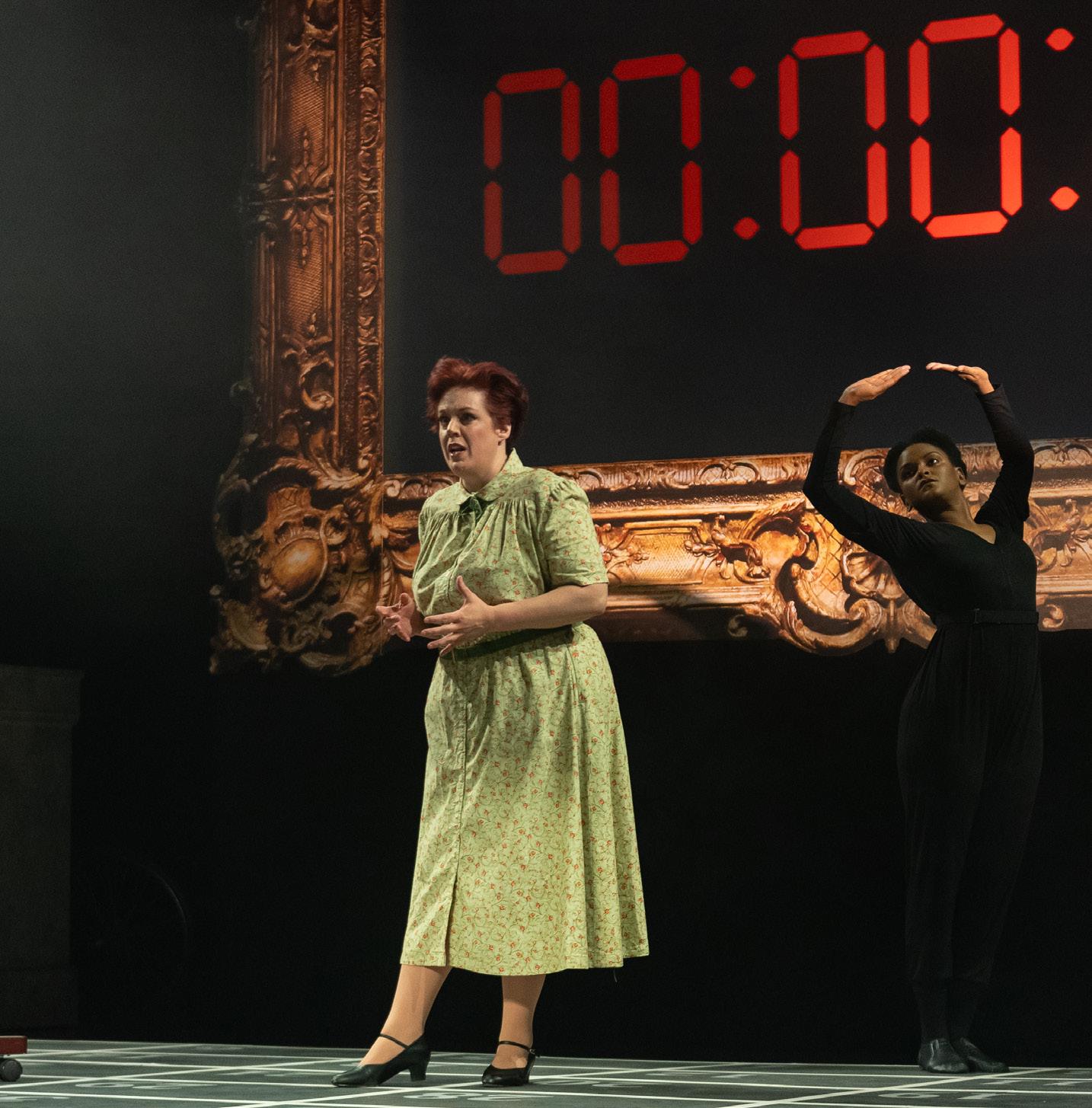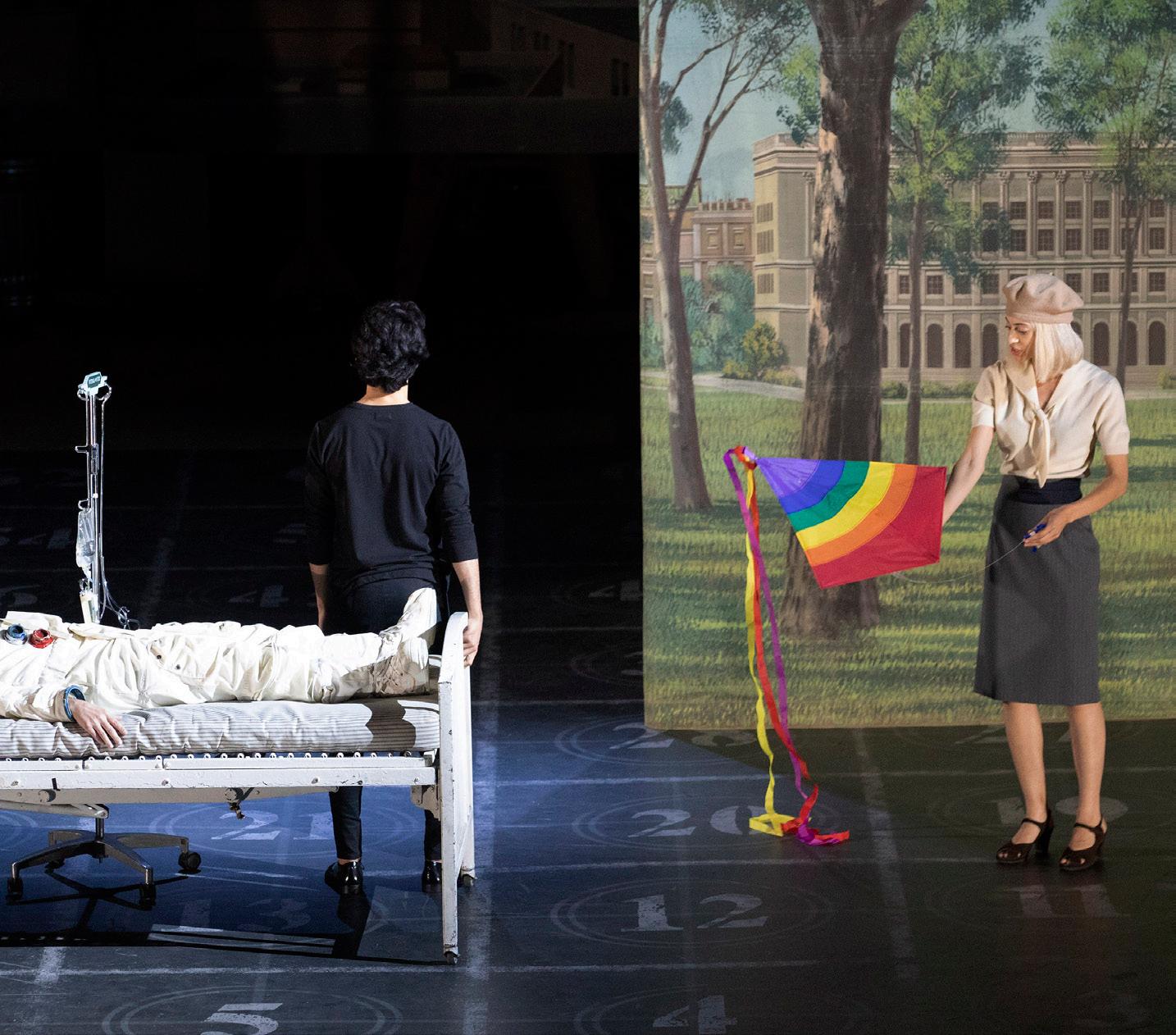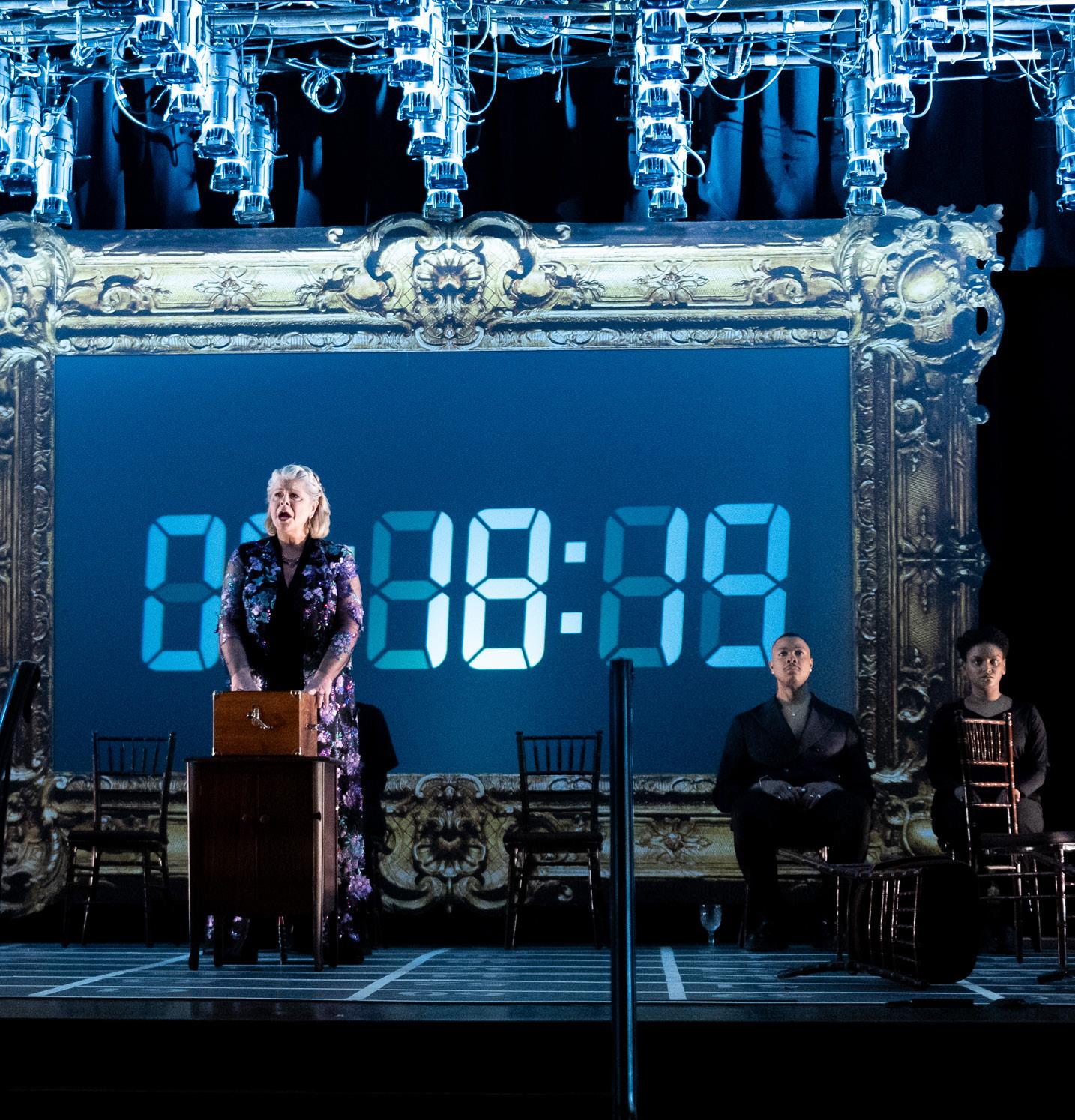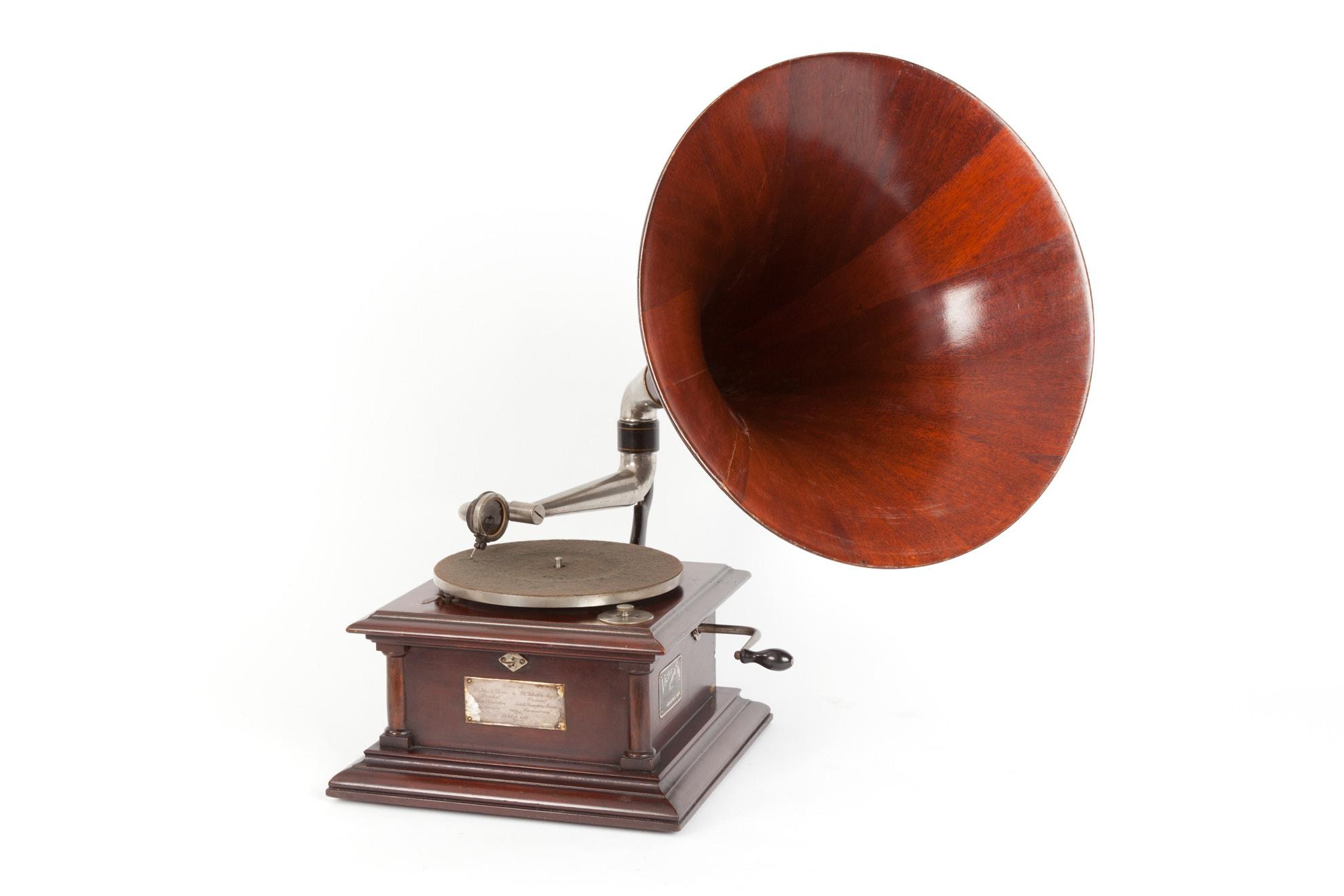John Cage
OPERAS AND SELECTED DRAMATIC WORKS
Europeras 1 & 2 (1987), Europeras 3 & 4 (1990), Europera 5 (1991), Song Books (1970)

“As living as opera can get.”
Yuval Sharon, director

introduction
The radical philosophy and artistic innovations of John Cage reverberated across the 20th century in fields as diverse as music, dance, visual art, computing, and mycology. Towards the end of his life, Cage explored the long historical tradition of the operatic stage in his five Europeras — a portmanteau of “Europe” and “opera” that also evokes “your opera,” placing the work in his audience’s possession. Like all of his works since the 1950s, these pieces employ chance operations to control crucial compositional decisions. Staging, lighting, costumes, and program notes are also controlled by chance; in Cage’s words, “nothing relates to anything except by coincidence.”
And yet, Europeras’ many citations of the standard operatic repertoire create a rich, evocative web of associations — sometimes seeming to playfully send up the conventions of European opera, and other times to reveal an affection for this musical heritage. Perhaps the best summary is Cage’s own: “For two hundred years the Europeans have been sending us their operas. Now I’m sending them back.”
Europeras 1 & 2
(1987)
Duration: 2 hours 15 minutes
Premiere: December 1987, Frankfurt Opera cast
Up to 19 singers, 12 dancers/actors orchestra
3(2pic).2(I:ca)+ca.2+bcl.2/2.2.2+btbn.1/timp.perc/[org]/tp[=cd]/str; elec note
The first pair of Europeras consists of the 90-minute Europera 1 and 45-minute Europera 2 A cast of up to 19 singers perform operatic arias in the public domain, and the singers are often lifted and moved — almost like statues or dolls — by the dancers who accompany them onstage. The orchestra performs collages of 1-16-measure fragments of operas from Gluck to Puccini; its sound is also augmented by “Truckera,” a massive, recorded collage of highly fragmented operatic excerpts that enters from time to time, like “a truck passing by.”
Throughout, the sequence of sonic events and choreographed movement is controlled by a stopwatch. The audience’s understanding of the works’ drama is framed by a synopsis/ program note each for Europera 1 and 2, which may be selected from a bank of 24 pairs of notes that Cage gives in the score. These range widely in tone and narrative, but are always highly dramatic and poetic; they gesture towards the heightened storylines of the operatic tradition: “She is bored with most men; he is in love with her. He accepts a preliminary trial hoping to find a way. She persuades him to give her life. He dies. Now in his dark tomb he goes to her rescue. She reawakens his love early in the morning.”
press
“...good-humored and unpretentious (for all its elaborate apparatus), lovingly prepared and performed and, in the end, gently charming.”
— John Rockwell, The New York Times
“...a brilliant collage of sight, sound, dimension, and movement.”
— Matt Davis, Sounding .com
“...an opera like no other...”
— Mark Swed, The Los Angeles Times
“...a crash course (literally) in the European opera tradition.”
— Jim Farber, San Francisco Classical Voice

Europeras 3 & 4 (1990)
Duration: 1 hour 40 minutes
Premiere: June 1990, Almeida Festival

cast
6 singers ensemble
2 pianos, 6 gramophone operators, electronics
note
From the grand scale of the first two Europeras, Cage pared down his performing forces for Europeras 3 & 4. In Europera 3, the orchestra is replaced by two pianists and six gramophone operators, while six singers present arias. Despite the chamber-like instrumentation, Europera 3 is dense, tumultuous, and exciting; the singers perform their favorite arias from European operatic repertoire, the gramophone operators play a range of classic 78 records, and same raucous “Truckera” collage from Europeras 1 & 2 periodically intrudes on the action.
In Europera 4, the performing forces are reduced even further to just two sopranos, a single piano, and one gramophone operator, with the “Truckera” interruptions now faint and offstage. This creates a tone of true intimacy that complements the noisier world of Europera 3, and Cage specified that the two works should always be performed together. Together, they create a nuanced and often joyful microcosm of operatic history.
press
“Europeras 3 & 4 present the audience with the ingredients of opera, shaken and stirred, leaving us to decide what to make of it.”
— Heidi Waleson, The Wall Street Journal
“...an unpredictable cornucopia of run-of-the-mill opera refashioned through chance operations into an outright operatic circus.”
— Mark Swed, The Los Angeles Times
“Puzzling ‘Europeras’ wins over younger audience at Detroit Opera.”
— Detroit Free Press
“...a dense, tumultuous work and a true celebration of opera”
— Mode Records
“...opera as a full-contact sport.”
— Gary Graff, The Oakland Press

Europera 5 (1991)
Duration: 1 hour

Premiere: April 1991, North American New Musical Festival, Buffalo, NY cast
Two singers ensemble piano, gramophone/electronics operator note
Europera 5 is Cage’s last opera, completed the year before he died. It employs similarly intimate forces as Europera 4 in a concise 60-minute form. The singers present five arias of their own choosing from the standard repertoire while the pianist performs excerpts of opera piano reductions in conjunction with recorded sound on a gramophone and tape. These slim forces and the minimal set that Cage specifies make Europera 5 a particularly wonderful choice for touring companies or productions in small spaces.

Song Books (1970)
Duration: open

Premiere: October 1970, Paris cast
One or more voices accompaniment optional electronics (fixed media and amplification) note
Though not an opera in name, Cage’s Song Books includes significant theatrical elements that make it ripe for dramatic presentation. Musicologist and composer Michael Nyman has described the work as “a musical-theatrical exploration of a chance remark that [Cage] made […]: ‘We connect Satie with Thoreau.’ ”
The collection consists of two volumes of solos, dedicated to pioneering singers Cathy Berberian and Simone Rist, and designated as “relevant” or “irrelevant” to the Satie-Thoreau connection. These solos take four forms: “songs,” “songs using electronics,” “theatre,” and “theatre using electronics.” Any number of the solos in any order may be performed by one or more singers, and solos may also be superimposed. Many of the songs use text drawn from the work of Henry David Thoreau, but texts by Merce Cunningham, Buckminster Fuller, Marshall McLuhan, and other thinkers important to Cage are also included. Ranging from songs that ask the singer to follow a map of Concord, Massachusetts or hum given melodies as if one “were doing something else” to electronic presentation of sounds from birdsong to typewriters and open-ended, often playful theatrical directions such as “leave the stage by going up (flying)” or “do not perform for longer than four minutes and thirty-two seconds,” the Song Books are laden with possibilities for creative staging and dramatization.

John Cage was born on September 5, 1912 in Los Angeles, California and died in New York City on August 12, 1992. Among his composition teachers were Henry Cowell and Arnold Schoenberg. Cage was elected to the American National Academy and Institute of Arts and Letters and received innumerable awards and honors both in the United States and in Europe. It would be extremely difficult to calculate, let alone critically evaluate, the stimulating effect and ramifications that Cage’s work has had on 20th-century music and art. His invention of the prepared piano and his work with percussion instruments led him to imagine and explore many unique and fascinating ways of structuring the temporal dimension of music.
photos
Cover: Europeras 3 & 4, Detroit Opera, photo by Austin Richey

Page 2: Europeras 1 & 2, Los Angeles Philharmonic and The Industry/Sony Studios, photo by Craig T. Mathew
Page 4: Europeras 3 & 4, Detroit Opera, photo by Austin Richey
Page 6: Gramophone, Leonardo da Vinci National Museum of Science and Technology in Milan, Alessandro Nassiri
Page 7: John Cage, Song Books vol. 1, page 44, © Henmar Press, Inc.
For more information contact Peggy Monastra peggy.monastra@schirmer.com, 212-254-2100
ORDERING INFORMATION
Rental orders and fee quotations: Zinfonia.com or WiseMusicClassical.com/licensing Sales materials: MusicDispatch.com or MusicRoom.com or your music dealer Publisher and Agency Representation for Wise Music Group: WiseMusicClassical.com/rental
Wise Music Group
USA: G. Schirmer, Inc. Associated Music Publishers, Inc. schirmer@schirmer.com
France: Première Music Group classical.paris@wisemusic.com
Denmark: Edition Wilhelm Hansen AS ewh@ewh.dk
Iceland: Wise Music Iceland inga.weisshappel@wisemusic.com
UK: Chester Music Novello & Co promotion@wisemusic.com
Spain: Unión Musical Ediciones classical.madrid@wisemusic.com
Australia: G. Schirmer Pty Ltd classical@wisemusic.com
Germany: Bosworth Music GmbH classical.berlin@wisemusic.com
C.F. Peters GmbH & Co. KG info.de@editionpeters.com
© Susan Schwartzenberg, The Exploratorium, 1987










